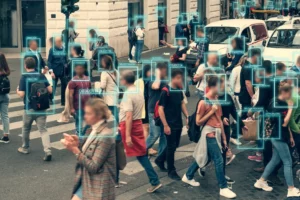Social media platforms contain a wealth of information that can be invaluable for investigations. As an investigator, you can leverage these digital trails left by individuals and organizations to gather intel, identify connections, and piece together activities.
Conducting online investigations requires carefully combing through profiles, posts, networks, images, and other data. You’ll need to verify and corroborate anything you find through primary sources. But used effectively, social media can provide unique insights and evidentiary trails.
Follow this guide to maximize the power of social media for your investigations:
Set Up Anonymous Accounts

The first step is setting up profiles on the main social platforms without revealing your identity. This allows you to lurk, search, and gather information without detection.
- For Facebook, use an alternate email address and don’t connect to other profiles. Keep information sparse.
- On Twitter, Instagram, and TikTok, avoid profile photos of yourself. Do not link other accounts.
- Be sure to turn off any location tagging features that could reveal your whereabouts.
Leverage Advanced Search Features
Each platform offers advanced search features you can use to narrow down accounts and content. Take time to understand the specific operators and filters available:
- Facebook – Use Graph Search to filter posts by keywords, dates, locations, and other criteria. You can also search within specific Groups.
- Twitter – The advanced search lets you filter tweets by keywords, usernames, dates, locations, languages, and more.
- Instagram – Search tools allow filtering by usernames, captions, locations, dates posted, and hashtag keywords.
- YouTube – Filters include search terms, dates, view counts, durations, captions, and more.
Look For Connections Between Accounts

A key use of social media is identifying networks and connections between different accounts that may provide clues.
- Look through friend/follower lists on Facebook, Instagram, Twitter, and YouTube. See which accounts frequently interact or share connections.
- Check hashtags and @mentions to find linked accounts conversing together.
- See if accounts share similar names, profile pictures, bios, posts, or other consistency.
Mapping out these connections between accounts can uncover affiliations relevant to your investigation.
Check Location History and Tags
Social media profiles often contain location data that provides real-world physical clues:
- Facebook and Instagram profiles may include current city or hometown.
- Posts can be tagged with location names or geocoordinates.
- Twitter and Instagram have location search filters.
- Location tags appear in image EXIF data.
Compiling location mentions can reveal patterns related to someone’s movements and activities.
Gather Posts and Other Useful Data

The most vital information is often contained in posts themselves. Compile relevant social media posts, conversations, images, videos, and other artifacts using screenshots, downloads, or third-party tools.
Useful data to collect includes:
- Text content – may provide details, admissions, affiliations.
- Images – can provide visual evidence and clues through reverse image lookup.
- Videos – capture statements and documented activity.
- Dates – timing and sequence can be telling.
- Links – showing sources and sites connected to.
This raw data extracted can serve as key evidence and unlock new leads.
Corroborate With Offline Sources
Avoid taking any online information at face value. Confirm what you find through primary sources:
- Public records (property, business, court documents)
- In-person interviews with reliable sources
- Eyewitness accounts and testimonies
- Financial records, credentials, licenses
- Anything definitive that can verify online findings
Thoroughly corroborating social media discoveries limits misinformation and provides concrete verification.
Digging Deeper on Specific Platforms
![]()
Here is a deeper look at techniques for key sites:
As the world’s largest social network, Facebook offers extensive personal data to mine:
- Check About Info for current and past cities, employers, education, contact info, and family members.
- Photos and albums can provide visual evidence of activities and connections.
- Monitor recent posts and comments on timelines for real-time intel.
- Use Graph Search to filter posts around certain events, topics, dates, and locations.
- Look through Groups joined to identify affiliations and interests.
- Access downloadable archives via GDPR for more extensive data.
- Leverage Business Pages similarly to personal profiles.
Instagram provides visual clues along with captions and metadata:
- Profile bios can list locations, websites, contact info.
- Exif data on images and videos may reveal device details.
- Instagram Stories show real-time transient content.
- Hashtags link accounts posting about similar topics.
- Highlight covers and avatar changes can signify events.
- Tagged photos surface connections and expose networks.
Twitter offers several key investigative features:
- Advanced search filters like keywords, dates, locations, etc.
- Look for similar avatar images, names, bios connecting accounts.
- Check who accounts follow/interact with, and who follows them.
- Compile threads around news events for real-time monitoring.
- List Tweets feature catalogs historical posts on topics.
- Media downloads preserve images, videos, GIFs posted.
- Location tags and geocoordinates expose movements.
YouTube
YouTube provides extensive video evidence to draw from:
- Search filters like durations, dates, view counts, and keywords.
- Channel About tabs show joined date, locations, links.
- Comment history can reveal affiliations and intentions.
- Playlist content aggregates videos around topics.
- Video descriptions may provide detailed text evidence.
- Download tools let you preserve copies of videos as evidence.
TikTok
On TikTok, leverage key features like:
- Hashtag challenges grouping videos around events.
- Duets and reactions between users showing connections.
- Comments and captions providing statements.
- Sounds and music choices indicating affiliations.
- Analytics on profiles quantifying reach and engagement.
- Download tools to preserve video evidence from accounts.
What Data to Collect
To recap, compile as much of the following social media data as possible for your evidence file:
- Account profile information and history
- Network connections between accounts
- Location details, tags, and maps
- Posts, comments, captions, and threading
- Images, videos, audio files
- Dates, timestamps, sequences
- Metadata like devices used
Screenshot, download, and archive anything relevant. This social data can provide the missing puzzle pieces to crack your case.
Social Media Monitoring Tools

Advanced social media monitoring tools offer even more powerful options for tracking data during investigations, such as:
- Social listening tools like Buzzsumo, Talkwalker, and Brand24 to detect trends and mentions.
- Location monitoring via tools like Geofedia and Geofeedia.
- Image scanning with services like PimEyes and SmartWater to detect duplicates.
- Account histories from sites like Social Searcher and FollowerAnalysis.
- Archiving tools like EveryBlock, PageSave and Hunchly for evidence gathering.
- Analytics through Hashtagify, RivalIQ, SocialRank, and others.
Consult with qualified legal counsel before using any paid monitoring services to ensure they comply with privacy, impersonation, and data laws. But properly applied, these tools unlock deep analysis of accounts, posts, networks, trends, and more.
Evaluating Online Information
As social media emerges as a common source of evidence, standards must evolve on corroborating and authenticating online data.
Experts recommend a few best practices when evaluating social media information:
- Look for multiple validating sources – Any key finding should ideally be verified through at least two or more independent online or offline sources.
- Establish an evidentiary foundation – Make a clear record explaining how evidence like social media posts were identified, collected and authenticated.
- Assess biases – Consider any biases or agendas that could influence the account or post creator. See if biases are disclosed in profiles.
- Contact sources – If feasible and appropriate, attempt to directly communicate with original creators of social content for more context.
- Consult specialists – Have digital forensic experts examine technical metadata to validate origins and integrity of digital artifacts.
- Explain procedures – Document precisely the tools, methods, and steps followed in amassing and examining online evidence.
Thinking Critically
Beyond just collecting social data, you need analytical thinking skills to unravel its meaning. Here are tips for analyzing evidence critically:
- Recognize cognitive biases in your own thinking and guard against them. This includes biases like confirmation bias and selective perception.
- Ask challenging questions from different viewpoints – e.g. is there an alternative explanation? What key evidence is missing? What opposing narratives make sense?
- Analyze patterns such as connections between users, timing of posts, consistent messaging, or gaps in the record. Don’t just look at content in isolation.
- Avoid assumptions about identities or motivations. Keep reevaluating as new data emerges.
- Explore hypotheses and use social data to test them. Be willing to reject hypotheses that aren’t borne out by facts.
- Use logic trees to diagram possible scenarios and systematically assess evidence supporting each branch.
- Leverage deduction, induction and other forms of reasoning to infer likely explanations from facts.
Objective analysis requires an open yet rigorous assessment of where the social media evidence leads when aggregated together. Avoid selective or biased interpretation.
Presenting Findings

Once your investigation is complete, you’ll need to organize and convey findings effectively. Keep these tips in mind:
- Create a timeline – Sequence key events identified from social media activity chronologically. Timelines help uncover causal relationships.
- Highlight corroborating evidence – Emphasize where social data aligns with other validated sources like public records or witness statements.
- Include original artifacts – Embed relevant first-hand social media evidence like screenshots, downloads, archives, etc. to back up the analysis.
- Avoid overreaching – Be clear on what the social data directly shows vs. where it requires interpretation or inference. Don’t overstate conclusions.
- Tell a compelling story – Structure the data to flow logically and support meaningful narrative threads that convince readers.
- Simplify complex data – Use visualizations like link charts to illustrate connections between accounts and events for clarity.
- Conform to data protection laws – In presenting findings, be sure not to violate any privacy, impersonation, copyright, or data usage regulations.
Effective presentation distills social media’s tangled web down to clear, credible conclusions. It builds convincing cases by allowing readers to independently assess the source evidence while walking them through key insights.
Real-Life Examples of Social Media Investigations
Some notable cases highlight social media’s growing role in investigations:
The Baton Rouge Police Shooting
After Baton Rouge police fatally shot Alton Sterling in 2016, investigators scoured related Facebook and Instagram profiles to identify protesters and make arrests. Defense lawyers accused them of illegally surveilling activists.
The New York Bombing Case
When Ahmad Khan Rahimi planted bombs in New York and New Jersey in 2016, investigators uncovered earlier Facebook posts where witnesses had spotted him acting suspiciously before the attacks.
The Capitol Insurrection
After the 2021 attack on the U.S. Capitol, FBI agents assembled evidence by reviewing over 140,000 photos and videos from social media, helping identify and charge over 300 suspects.
Consult With Legal Counsel
There are also legal considerations:
- Privacy laws may restrict access or require consent.
- Impersonation raises ethics issues.
- Harassment and defamation must be avoided.
- Platform terms of service restrict data usage.
Consult qualified legal counsel to ensure your investigative activities involving social media remain above board. Get consent where required.
Key Takeaways
Here are the core tips to remember when using social media for investigations:
- Set up anonymous accounts to conceal your activities.
- Master advanced search features to efficiently scan content.
- Look for connections between accounts that may provide leads.
- Check for location history and geotags that reveal movements.
- Gather relevant posts, images, videos, and other useful data.
- Thoroughly corroborate online information with offline sources.
- Consult qualified legal counsel to ensure lawful practices.
The Next Generation of Social Investigations
As social platforms continue evolving rapidly, so too will their role in investigations. A few emerging trends to expect:
- More private and encrypted networks – Platforms like Signal, Telegram and WhatsApp will drive sensitive communications into darker channels not readily searchable.
- AR and VR spaces – Virtual, augmented and mixed reality environments will become new social hotspots with their own data trails.
- Voices and videos proliferating – Multimedia content will overwhelm text, requiring advanced analytical capabilities to parse.
- Tighter data access – Legal and policy changes may restrict what user data is accessible, forcing investigators to adapt.
- AI assistance – Algorithmic tools will help process immense data volumes, surface patterns, and generate insights. But AI bias will need to be constrained.
While the landscape shifts, universal skills like critical thinking, technical proficiency, legal wisdom and ethical judgment will remain fundamental to navigating it successfully. Social media will only grow as an investigative fixture, albeit one requiring keen insight to wield responsibly.
This guide should provide a robust foundation for leveraging these platforms effectively as a tool that can amplify truth when applied judiciously. With sound strategy and ethics, social media’s unparalleled access to humanity’s digital traces will reveal key evidence — if you know where and how to look. Now put these tips into practice and start uncovering answers.

